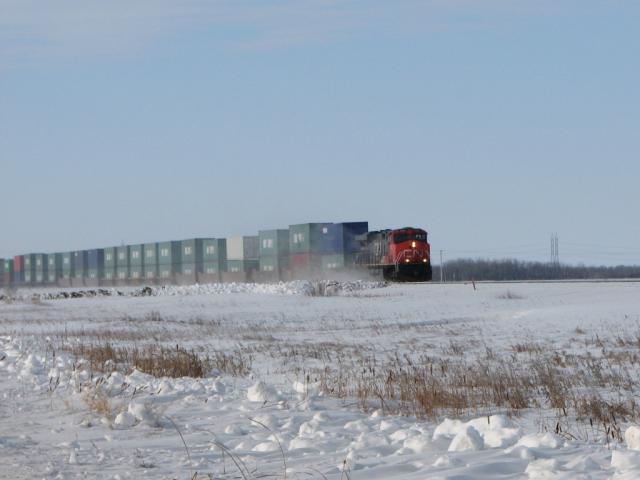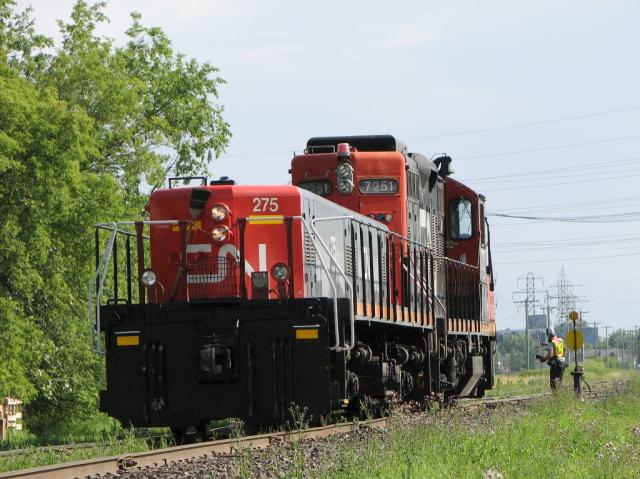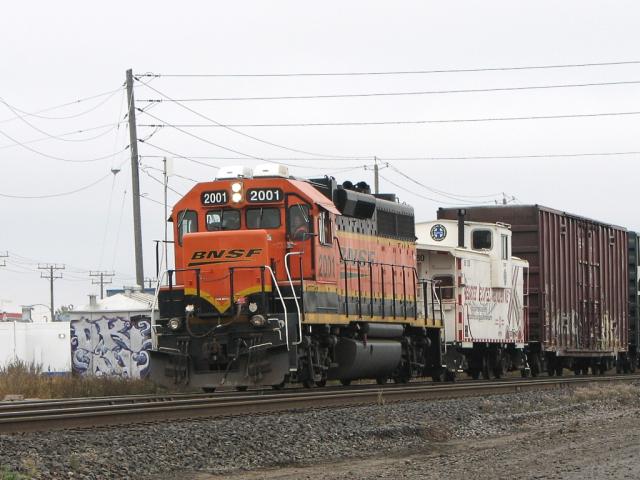
What is a train? It seems like a simple question, but in the context of the Canadian Rail Operating Rules, it is a little more complicated than you might think.
The definition of TRAIN in the March 19, 2008 CROR is:
A train:
(a) is an engine which is intended to operate at speeds greater than 15 MPH;
(i) without cars; or
(ii) with cars and equipped with a TIBS or remote control locomotive at the rear; or
(iii) with cars including a caboose occupied by a crew member; or
(iv) with cars in passenger service,
(b) is a track unit when so designated.
You also need the definitions of ENGINE, TRACK UNIT, and TIBS.
ENGINE: A locomotive(s) operated from a single control or a cab control car, used in train, transfer or yard service.
TRACK UNIT (TU): A vehicle or machine capable of on-track operation utilized for track inspection, track work and other railway activities when on a track.
TRAIN INFORMATION BRAKING SYSTEM (TIBS): A system with rear and front of train radio communication components capable of: 1. monitoring and displaying brake pipe pressure on the rear car; 2. calculating and displaying distance measurement;3. initiating an emergency brake application at the rear of the train from the head end; and will be equipped with a red light and/or red reflectorized plaque at the rear of the train.
First off, a train has to have an engine or a track unit. A stand of cars by themselves is not a train.
Note the requirement that the engine has to be intended to operate at speeds greater than 15 MPH. A "yard transfer" can operate on main track but not exceeding 15 MPH.
TRANSFER: An engine with or without cars operating on main track at speeds not exceeding 15 MPH and need not be TIBS equipped.

OK, so a train has to have an engine intended to operate at greater than 15 MPH. It can have: (i) no cars; (ii) cars with a TIBS or loco on the end; (iii) cars and occupied caboose; or (iv) passenger cars.
Some examples:
- intermodal freight with engines at head end, TIBS on tail end: TRAIN
- VIA's Canadian with engines and passenger cars: TRAIN
- GP9 and slug with cars, remotely controlled: TRANSFER
- engines running light: could be either TRAIN or TRANSFER, depending on intended speed
The CROR lump all types into a movement.
MOVEMENT(S): The term used in these rules to indicate that the rule is applicable to trains, transfers or engines in yard service.
Why Does This Matter?
It matters because some rules apply to movements and some just apply to trains.
For example, I have always wondered why BNSF never uses the ditch lights when going between their yard in Winnipeg and CN's Fort Rouge yard.

The CROR specifies in rule 19 that "A train must have ditch lights displayed continuously in the direction of travel when the headlight is required to be displayed full power." (emphasis mine)
The answer is there. The BNSF job is a transfer, not a train, so it is not required to use ditch lights. Rule 17 says it must use headlights, and that is why you will see the single headlight on but not the ditch lights.
In most cases, the CROR uses the language "train or transfer" to cover both types, but you need a sharp eye to note the exceptions.
2 comments:
its soo awesome to see these trains :)
What's a train?! Haha Good one!
A Train is made up of a locomotive that pulls cars around on tracks.
Post a Comment